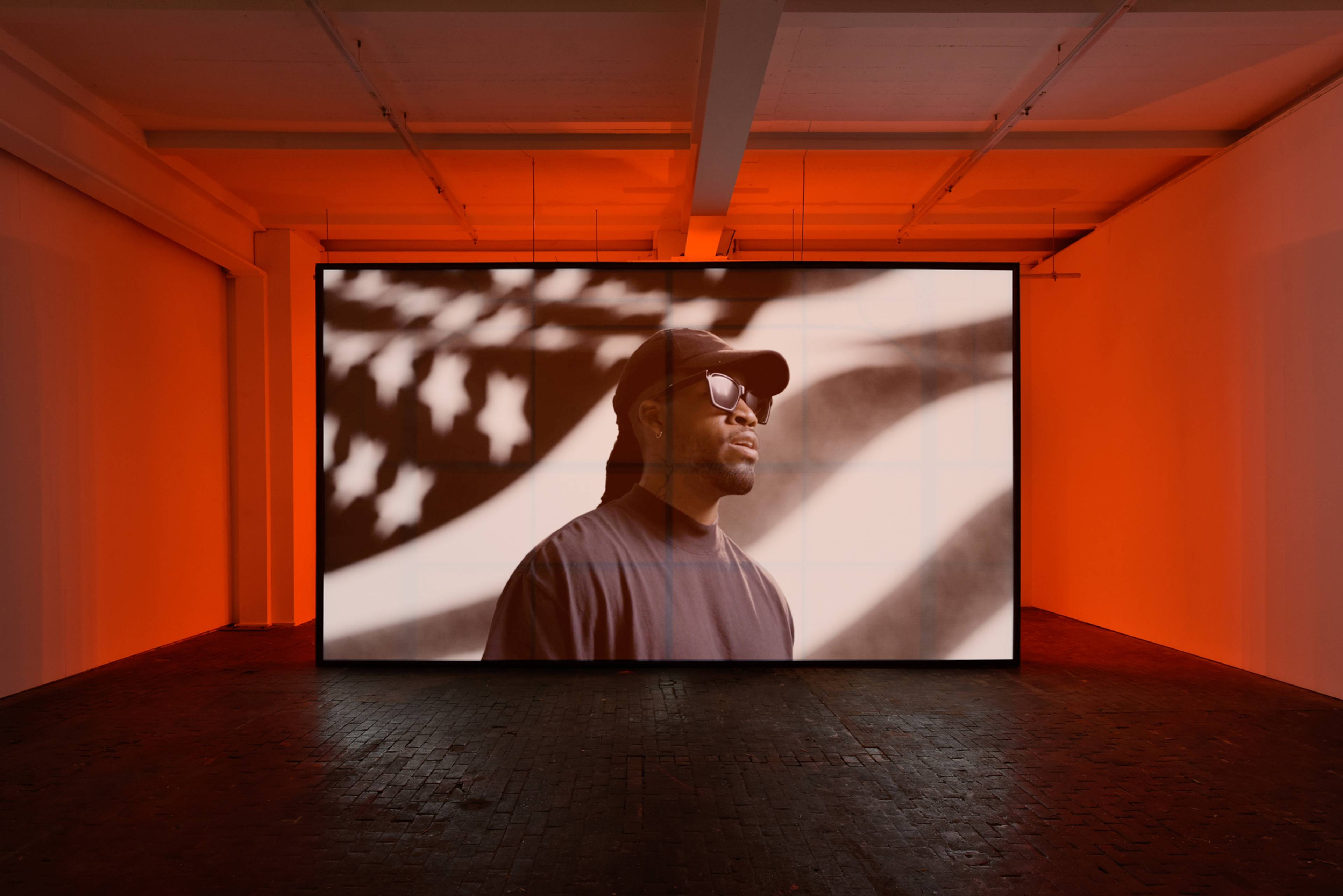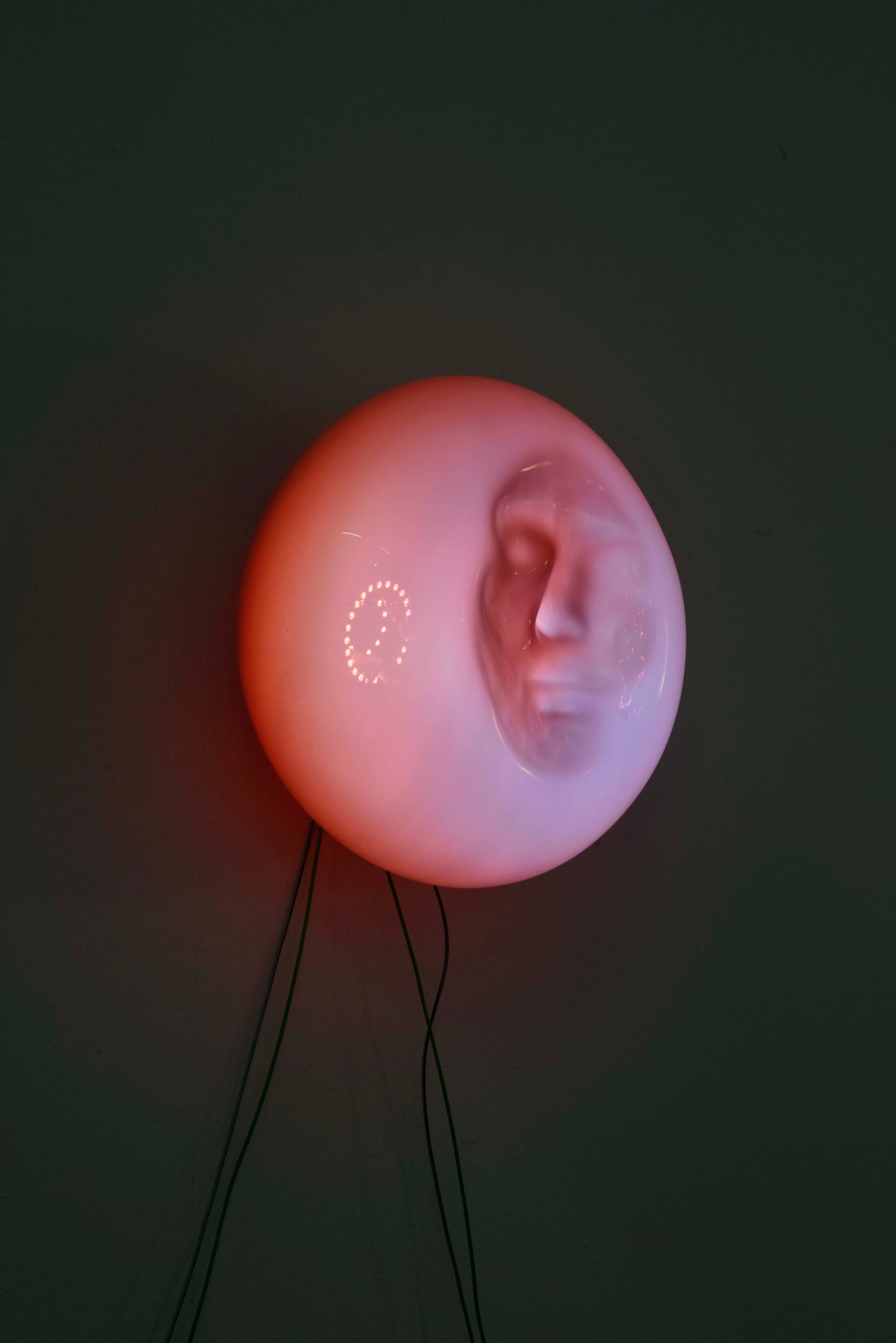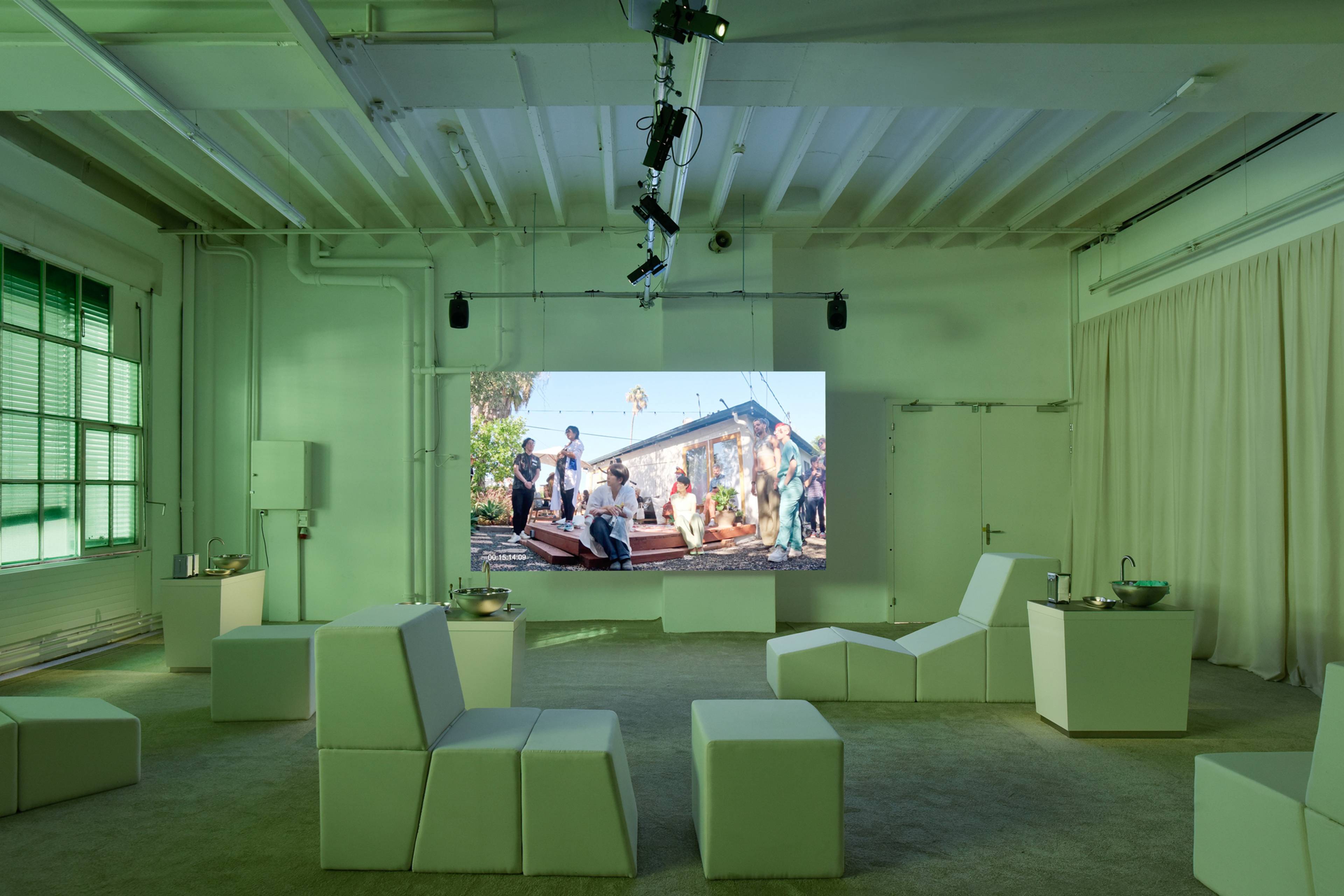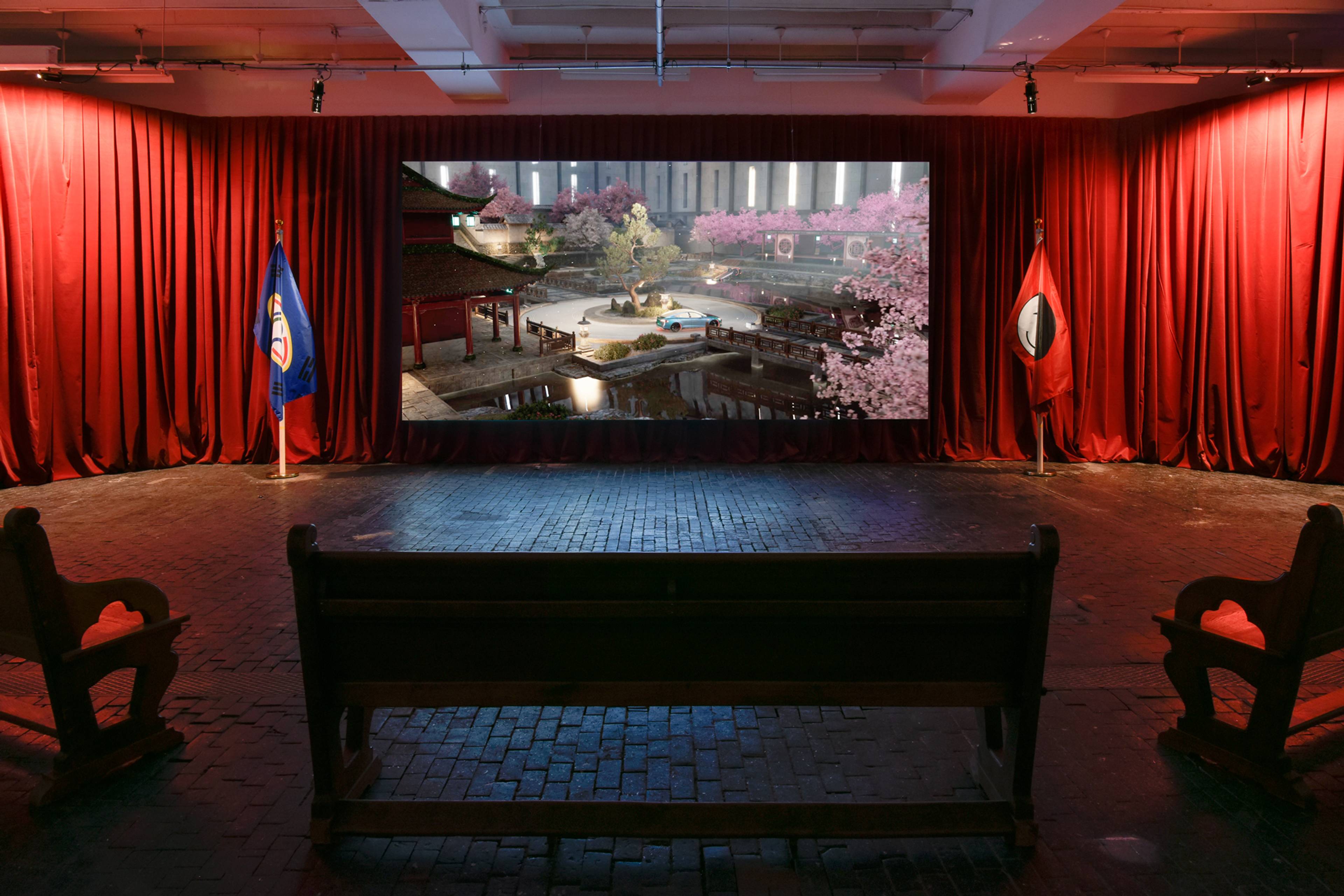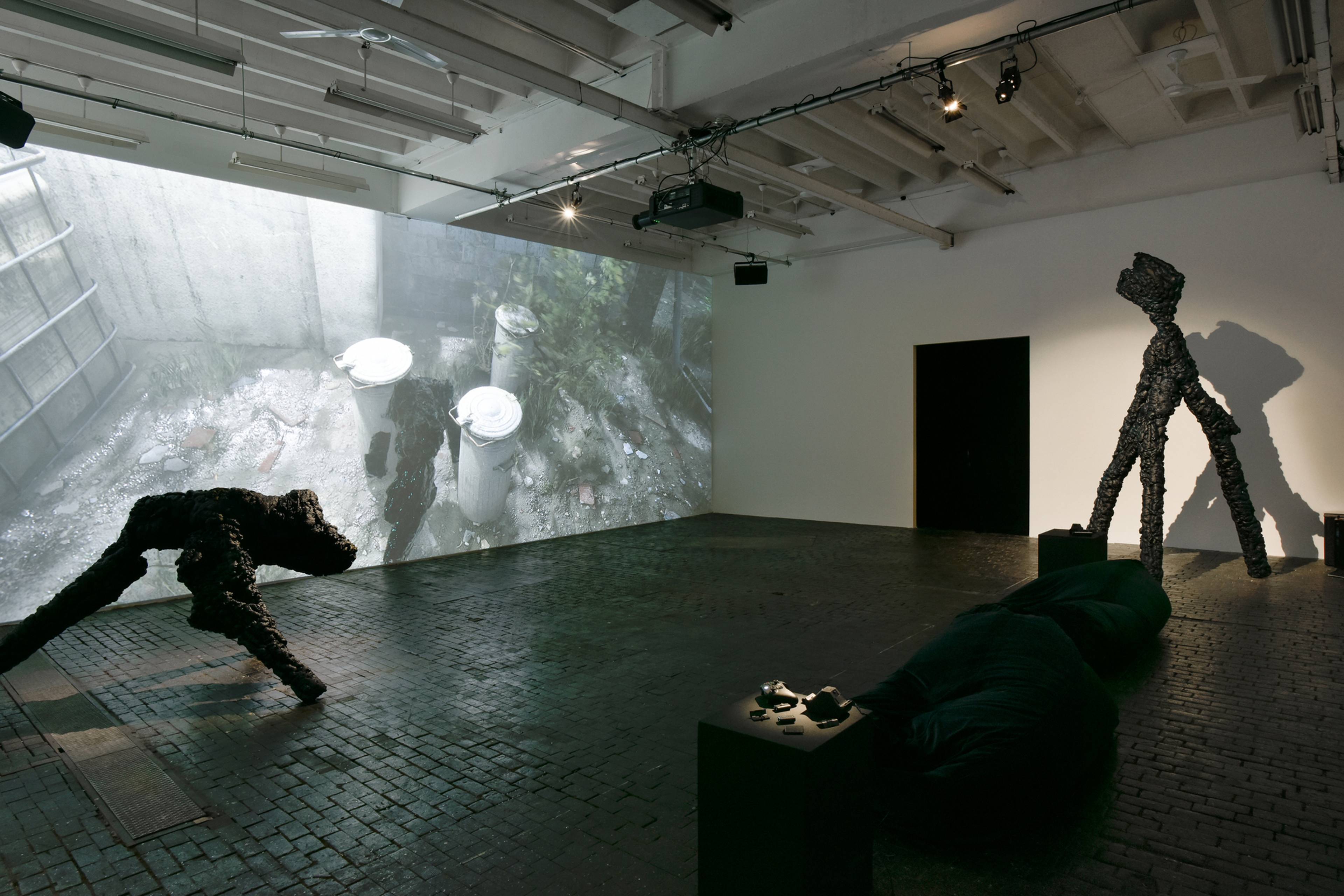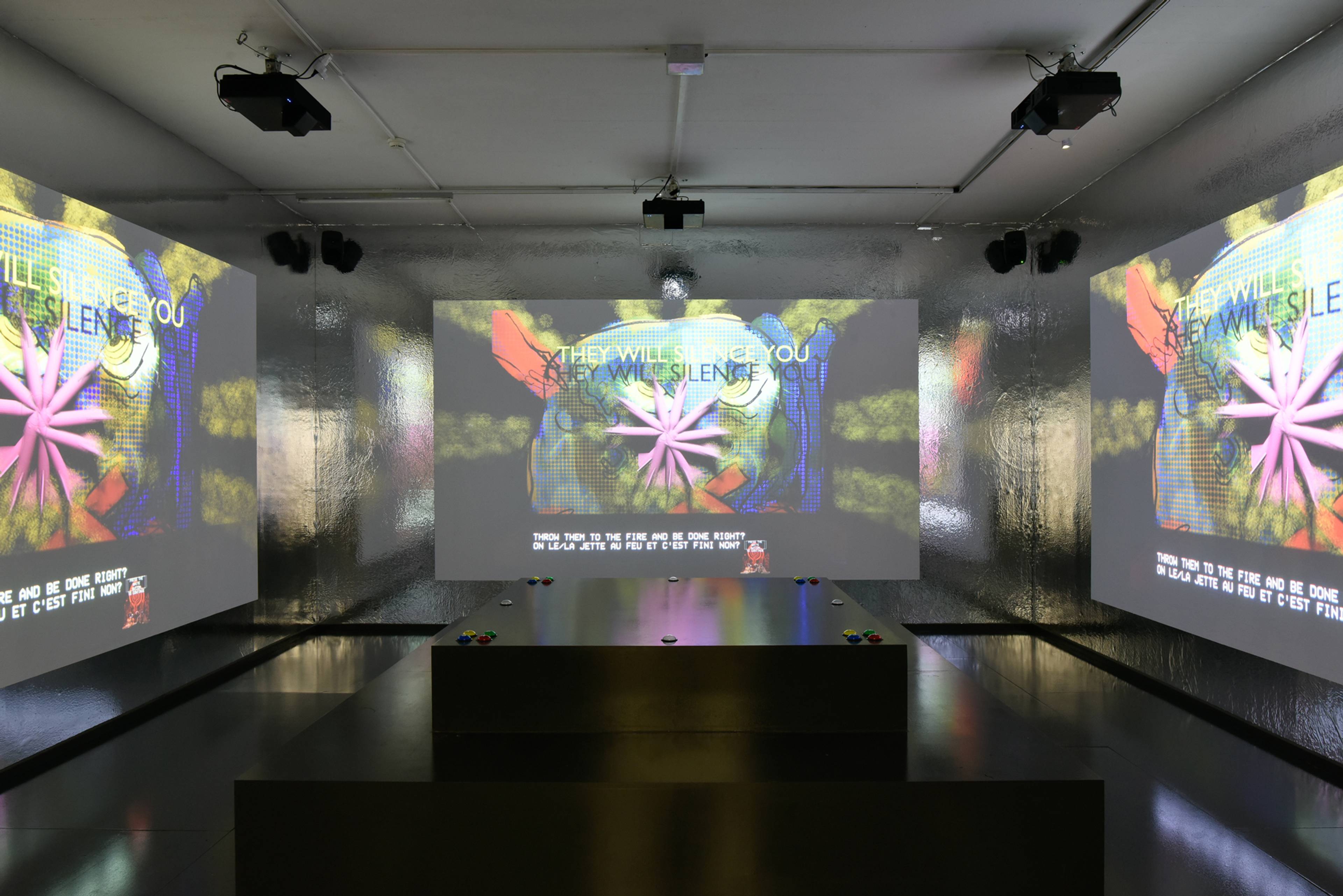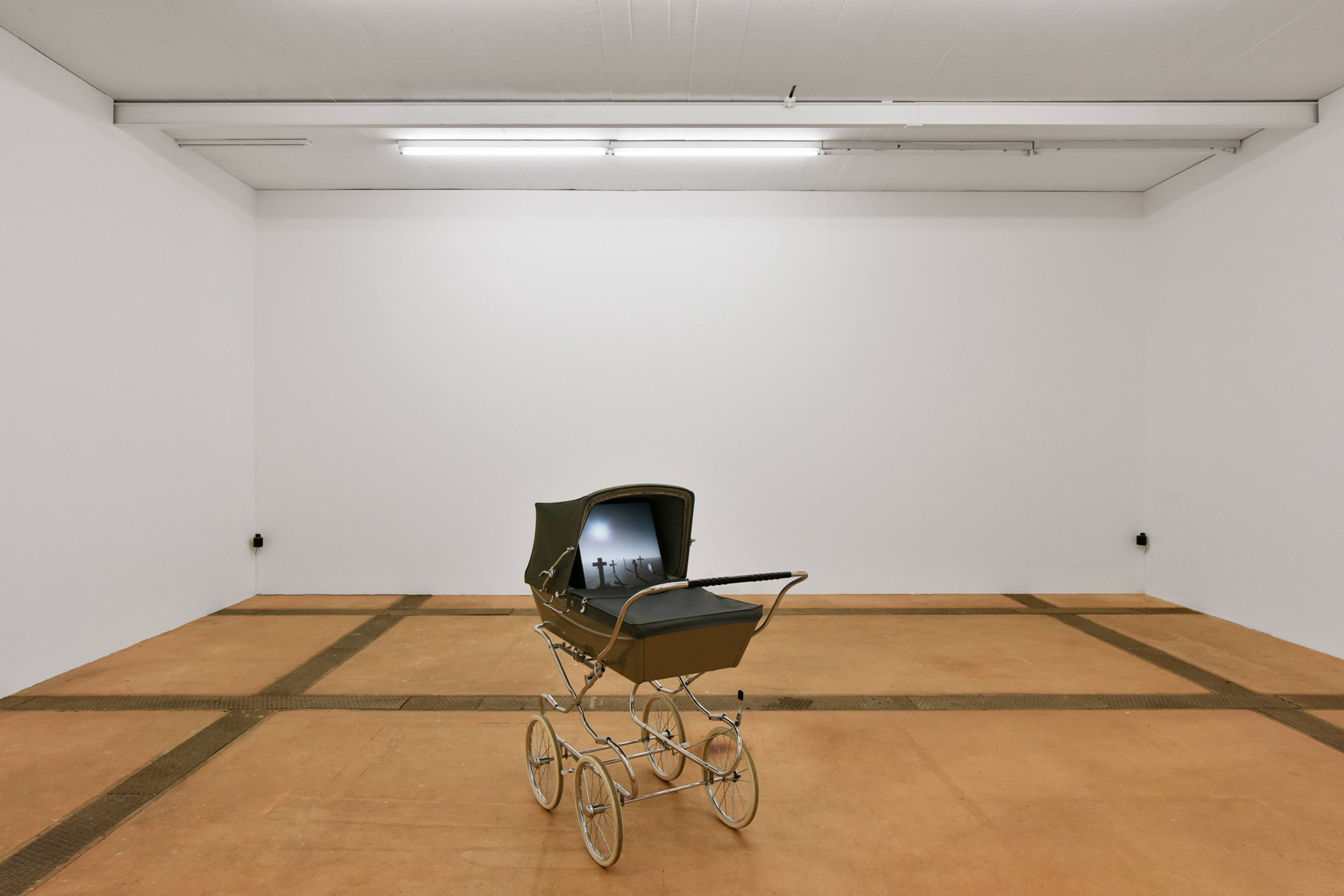When does an image end? What are images made of nowadays, and what can they tell us about the world? Holding within themselves centuries-long speculations on perception, motion, and reproducibility, these questions have come to carry a different charge in a present where social platforms have turned images’ consumers into their producers, too. While not necessarily weakening a certain sort of research on images, this shift demands a greater effort from artists who increasingly question the media element in favor of an expanded, self-generated image that pours itself into space, into the object, expanding formal possibilities to such an ephemeral medium.
Such effort is also required of curatorial formats like the Biennale de l’Image en Mouvement in Geneva, now in its 18th edition. Inspired by the recent discovery that the photon rings orbiting a black hole form a kind of “movie frame” about the history of the universe as seen from the black hole’s perspective, “A Cosmic Movie Camera” was conceived by Andrea Bellini and Nora N. Khan as a never-ending viewfinder on worlds material and simulated. Focusing on the possibilities of image “production” by algorithms and AI, the fifteen works at CAC – with a counterpart developed by the virtual gallery EPOCH – attempt to go beyond the possibilities of the moving image by looking at these technologies’ entanglements in the visual arts as much as in astrophysics.
Emmanuel Van der Auwera, VideoSculpture XXX (The Gospel), 2024, video installation, 17:53 min.
Jenna Sutela, Sharp wave, ripples, 2024, five sculptures, blown glass, LEDs, microprocessors, wires, dimensions variable
Lauren Lee McCarthy, Saliva Retreat, 2024, digital video, 43:00 min.
In Jenna Sutela’s Sharp wave, ripples (2024), a quintet of photonic, humanoid heads of blown glass and programmable LEDs seem to self-generate from light and proliferate across our visual horizons. Another “performing” object, Emmanuel Van der Auwera’s monolithic VideoSculpture XXX (The Gospel) (2024), seems to exist only in a condition of perpetual darkness, images from the simulated interior of a rare earth mine construing opacity as an essential dimension of regeneration, voiced-over by the artist’s dialogue with Caryn, a generative-AI girlfriend. In a different vein, Lauren Lee McCarthy’s Saliva Retreat (2024) simulates the mint-green lounge of a “spit swapping” laboratory, designed by Formafantasma, siting a film of an LA gathering whose protagonists discuss the significance of externally giving up once bodily substances.
The distinction between direct human productions and those of human-developed surrogates is increasingly blurred, in this biennial as in life more broadly. Especially resonant in this respect are Danielle Brathwaite-Shirley’s statements in the interactive visual novel NO SPACE FOR REDEMPTION? (2023) – “NOTHING GOOD CAN COME FROM THE CHOICES YOU HAVE BEEN OFFERED” – and Lawrence Lek’s CGI series episode Empty Rider (2024), which speculates on the emergence of intergenerational trauma in the age of automated learning. Reminiscent of a Californian vista, American Artist’s Yannis Window (2024) alternates a pair of videos inspired by Octavia E. Butler’s novel Parable of the Sower (1993), one of which, formatted like a news report, informs us of the death of character-astronaut Alicia Catalina Godinez Leal on Mars. Layered visual simulations follow one another through a ruinous, post-apocalyptic, multiplayer game by Sahej Rahal, Distributed Mind Test (DMT) (2023), which asks us to inhabit a three-legged, nonhuman body and experience the separation between our mind and a beyond that escapes our understanding.
Lawrence Lek, Empty Rider, 2024, single-channel video, 16 min.
Sahej Rahal, Distributed Mind Test (DMT), 2023, video game, site-specific sculpture, drawings, installation, sound
Danielle Brathwaite-Shirley, NO SPACE FOR REDEMPTION?, 2023, interactive visual novel, playtime 5–20 min.
Shuang Li, My Way Home is Through You, 2023, video installation, sound, 4:25 min. Soundtrack by LABOUR (Farahnaz Hatam and Colin Hacklander)
There is no lack of moments of empathy and epiphany to reconnect with our human fragility. In My Way Home is Through You (2023), Shuang Li mashes up memories from her childhood in China and family-album photo- graphs centered on a castle, which is the site of a juvenile prison. Diego Marcon’s epistolary melodrama La Gola (The Throat, 2024) rouses our sympathy for Rossana’s suffering from her mother’s degenerative illness, only to excite out- loud laughter at Gianni and his all-too-Italian descriptions of meal courses prepared by his friend. A clear gem of this biennial is Alfatih’s A Way Out of Time (2024), where a lonesome, Victorian-style pram invites visitors to push it or snoop inside. Again, it’s a trick to the imagination – there’s no human life inside, but a monitor staging a ChatGPT-written drama in real time.
In a recent interview, the astrophysicist Mariafelicia De Laurentis described black holes as the ideal objects to find out “what we are made of, where we came from, and where we are going.” That may be exactly what the images want to tell us, but through what ephemeral power are they still able to do so? What seems understated in this biennial, and perhaps what constitutes its keenest insight, is that images are no longer sufficient in themselves – there are in fact no “new” possibilities in film and video medium per se, only a return to matter, space, and object.
Alfatih, A Way Out of Time, 2024, pram, real-time video of variable duration, full-time gallery attendant. Soundtrack by Tapiwa Svosve
___
“A Cosmic Movie Camera”
Centre d’Art Contemporain Genève
24 Jan – 16 May 2024


